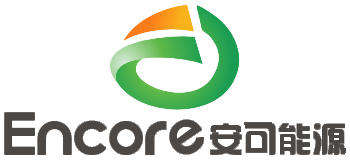- English
- Español
- Português
- русский
- Français
- 日本語
- Deutsch
- tiếng Việt
- Italiano
- Nederlands
- ภาษาไทย
- Polski
- 한국어
- Svenska
- magyar
- Malay
- বাংলা ভাষার
- Dansk
- Suomi
- हिन्दी
- Pilipino
- Türkçe
- Gaeilge
- العربية
- Indonesia
- Norsk
- تمل
- český
- ελληνικά
- український
- Javanese
- فارسی
- தமிழ்
- తెలుగు
- नेपाली
- Burmese
- български
- ລາວ
- Latine
- Қазақша
- Euskal
- Azərbaycan
- Slovenský jazyk
- Македонски
- Lietuvos
- Eesti Keel
- Română
- Slovenski
- मराठी
- Srpski језик
Complete manual for lithium battery production process
2023-07-12
Complete manual for lithium battery production process
Ion batteries are a complex system that includes positive electrode, negative electrode, separator, electrolyte, current collector and binder, conductive agent, etc. The reactions involved include electrochemical reactions of positive and negative electrodes, lithium ion and electron conduction, and heat diffusion. The production process of lithium batteries is relatively long, involving more than 50 processes.
Lithium batteries can be divided into cylindrical batteries, square batteries, and soft pack batteries according to their form, with certain differences in production processes. However, overall, the lithium battery manufacturing process can be divided into the front process (electrode manufacturing), the middle process (cell synthesis), and the rear process (formation and packaging). Due to the high safety performance requirements of lithium-ion batteries, there are extremely high requirements for the accuracy, stability, and automation level of lithium-ion equipment in the battery manufacturing process.
Lithium battery equipment is a process equipment that uses ordered processes to manufacture raw materials such as positive and negative electrode materials, separator materials, and electrolyte. Lithium battery equipment has a significant impact on the performance and cost of lithium batteries and is one of the determining factors. According to different process flows, lithium battery equipment can be divided into front-end equipment, mid-stage equipment, and back-end equipment. In the lithium battery production line, the value of front-end, mid-stage, and back-end equipment accounts for approximately 4:3:3.
The production goal of the previous process is to complete the manufacturing of (positive and negative) electrode plates. The main process of the previous stage includes mixing, coating, rolling, slitting, slicing, and die-cutting. The equipment involved mainly includes: mixer, coating machine, roller press, slitting machine, slicing machine, die-cutting machine, etc.
The slurry mixing (equipment used: vacuum mixer) is to mix the positive and negative Solid-state battery materials evenly and then add solvent to stir them into slurry. Slurry mixing is the starting point of the previous process and the foundation for completing subsequent coating, rolling, and other processes.
Coating (equipment used: coating machine) is to evenly coat the stirred slurry on the metal foil and dry it to make positive and negative plates. As the core link of the previous process, the execution quality of the coating process deeply affects the consistency, safety, and lifespan of the finished battery. Therefore, the coating machine is the most valuable equipment in the previous process.
Roller pressing (equipment used: roller press) is to further compact the coated electrode, thereby increasing the energy density of the battery. The flatness of the rolled electrode directly affects the processing effect of the subsequent slitting process, and the uniformity of the active substances in the electrode also indirectly affects the performance of the battery cell.
Splitting (equipment used: slitting machine) is the process of continuously slitting a wide coil of pole pieces into several narrow pieces of the required width. The fracture failure of the electrode plate during cutting is caused by shear action, and the smoothness of the edge after cutting (without burrs or buckling) is the key to evaluating the performance of the slitting machine.
Production (equipment used: production machine) includes welding the electrode ears of the cut electrode pieces, applying protective tape, wrapping the electrode ears with glue, or using laser cutting to form the electrode ears, which can be used for subsequent winding processes. Die-cutting (equipment used: die-cutting machine) is the process of punching and forming coated polar plates for subsequent processes.
The production goal of the mid process is to complete the manufacturing of battery cells. There are differences in the Technology roadmap and production line equipment of the mid process of different types of lithium batteries. The essence of the intermediate process is the assembly process, specifically the orderly assembly of the (positive and negative) electrode plates made from the previous process with the diaphragm and electrolyte. Due to the different energy storage structures of square (roll), cylindrical (roll) and flexible (layered) batteries, there are obvious differences in the Technology roadmap and production line equipment of different types of lithium batteries in the middle process. Specifically, the main processes of the middle stage of square and cylindrical batteries include winding, liquid injection, and packaging. The equipment involved mainly includes: winding machine, liquid injection machine, packaging equipment (shell insertion machine, groove rolling machine, sealing machine, welding machine), etc; The main process of the middle stage of the soft pack battery includes lamination, liquid injection, and packaging, and the equipment involved mainly includes lamination machine, liquid injection machine, packaging equipment, etc.
Winding (equipment used: winding machine) is the process of winding the electrode plates produced by the production process or the winding die cutting machine into lithium-ion battery cells, mainly used for the production of square and circular lithium-ion batteries. The winding machine can be divided into two categories: square winding machine and cylindrical winding machine, which are respectively used for the production of square and cylindrical lithium batteries. Compared to cylindrical winding, the square winding process has higher requirements for tension control, so the technical difficulty of the square winding machine is greater.
Lamination (equipment used: laminating machine) is the process of stacking individual electrode plates produced during the die-cutting process into lithium-ion battery cells, mainly used for the production of soft pack batteries. Compared to square and cylindrical cells, soft pack cells have significant advantages in energy density, safety, and discharge performance. However, the completion of a single stacking task by a laminating machine involves multiple sub processes in parallel and complex mechanism collaboration, and improving stacking efficiency requires addressing complex dynamic control problems; The speed of the winding machine is directly related to the winding efficiency, and the means of improving efficiency are relatively simple. At present, there is a gap in production efficiency and yield between laminated cells and wound cells.
The liquid injection machine (equipment used: liquid injection machine) is used to quantitatively inject the electrolyte of the battery into the cell.
Cell packaging (using equipment such as shell insertion machine, groove rolling machine, sealing machine, welding machine) involves placing the coil core into the cell shell.
The production goal of the later stage of the process is to complete the transformation into packaging. As of the middle stage, the functional structure of the lithium battery cell has been formed, and the significance of the latter stage is to activate it, undergo testing, sorting, and assembly, and form a safe and stable lithium battery product. The main processes of the later stage of the process include: formation, separation, testing, sorting, etc. The equipment involved mainly includes: charging and discharging motors, testing equipment, etc.
Formation (using a charging and discharging motor) is the process of activating the battery cell through the first charge, during which an effective passivation film (SEI film) is generated on the negative electrode surface to achieve the "initialization" of the lithium battery. Dividing capacity (used equipment: charging and discharging motor), also known as "analyzing capacity", refers to the process of charging and discharging the converted battery cell according to design standards to measure the capacitance of the battery cell. The charging and discharging process of the battery cell runs through the formation and capacitance separation process, so the charging and discharging motor is the most commonly used rear core equipment. The minimum working unit of a charging and discharging motor is the "channel". A "unit" (BOX) is composed of several "channels", and multiple "units" are combined to form a charging and discharging motor.
Testing (equipment used: testing equipment) must be carried out before and after charging, discharging, and resting; Sorting refers to the classification and selection of batteries that have been formed and divided according to certain standards based on the detection results. The significance of the detection and sorting process is not only to eliminate unqualified products, but also because in practical applications of lithium-ion batteries, cells are often combined in parallel or series. Therefore, selecting cells with similar performance can help achieve the optimal overall performance of the battery.
The production of lithium batteries cannot be separated from lithium battery production equipment. In addition to the materials used in the battery itself, the manufacturing process and production equipment are important factors that determine the performance of the battery. In the early days, China's lithium battery equipment mainly relied on imports. After several years of rapid development, Chinese lithium battery equipment companies have gradually surpassed Japanese and Korean equipment companies in terms of technology, efficiency, stability, and other aspects, and have advantages in cost-effectiveness, after-sales maintenance, and other aspects. At present, a cluster of domestic lithium battery equipment enterprises has been formed and has become a business card for China's high-end equipment entering the international market. With the vertical alliance and overseas expansion of lithium battery leaders, lithium battery equipment has benefited from downstream expansion and ushered in a new period of rapid growth opportunities.



